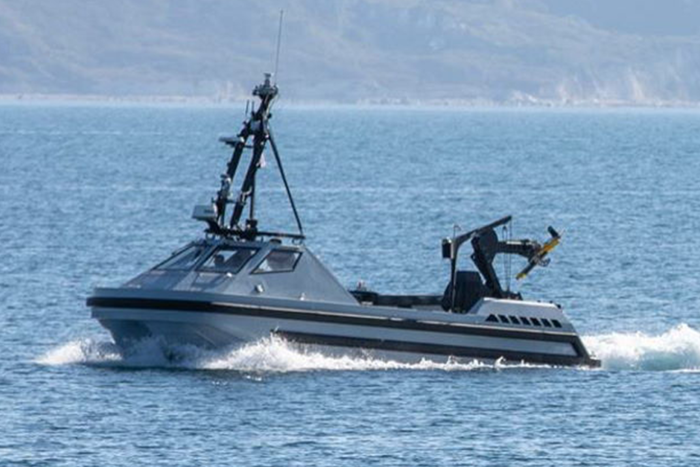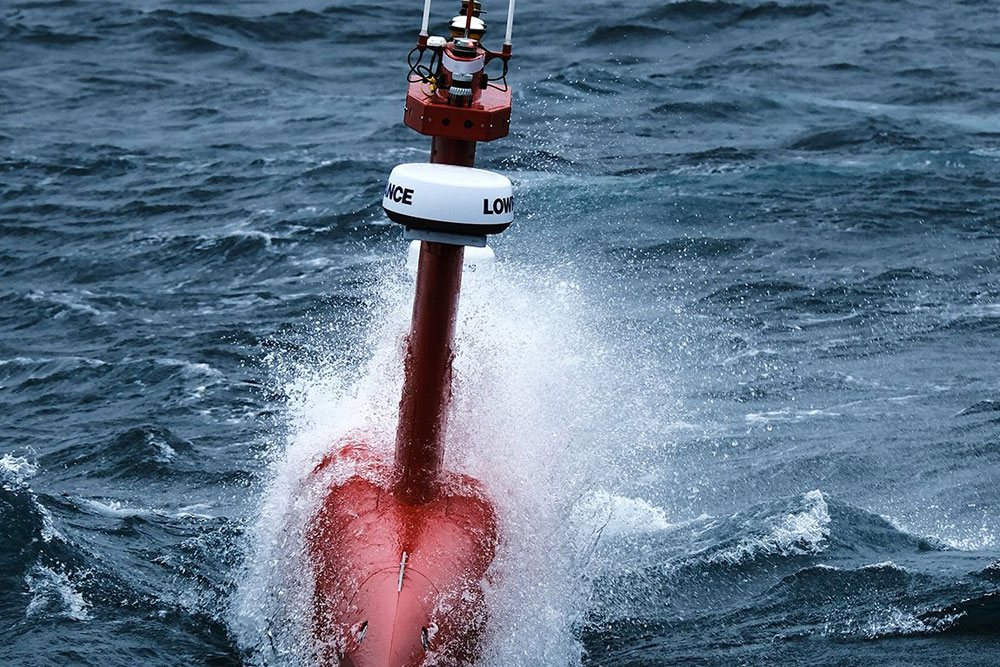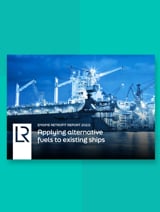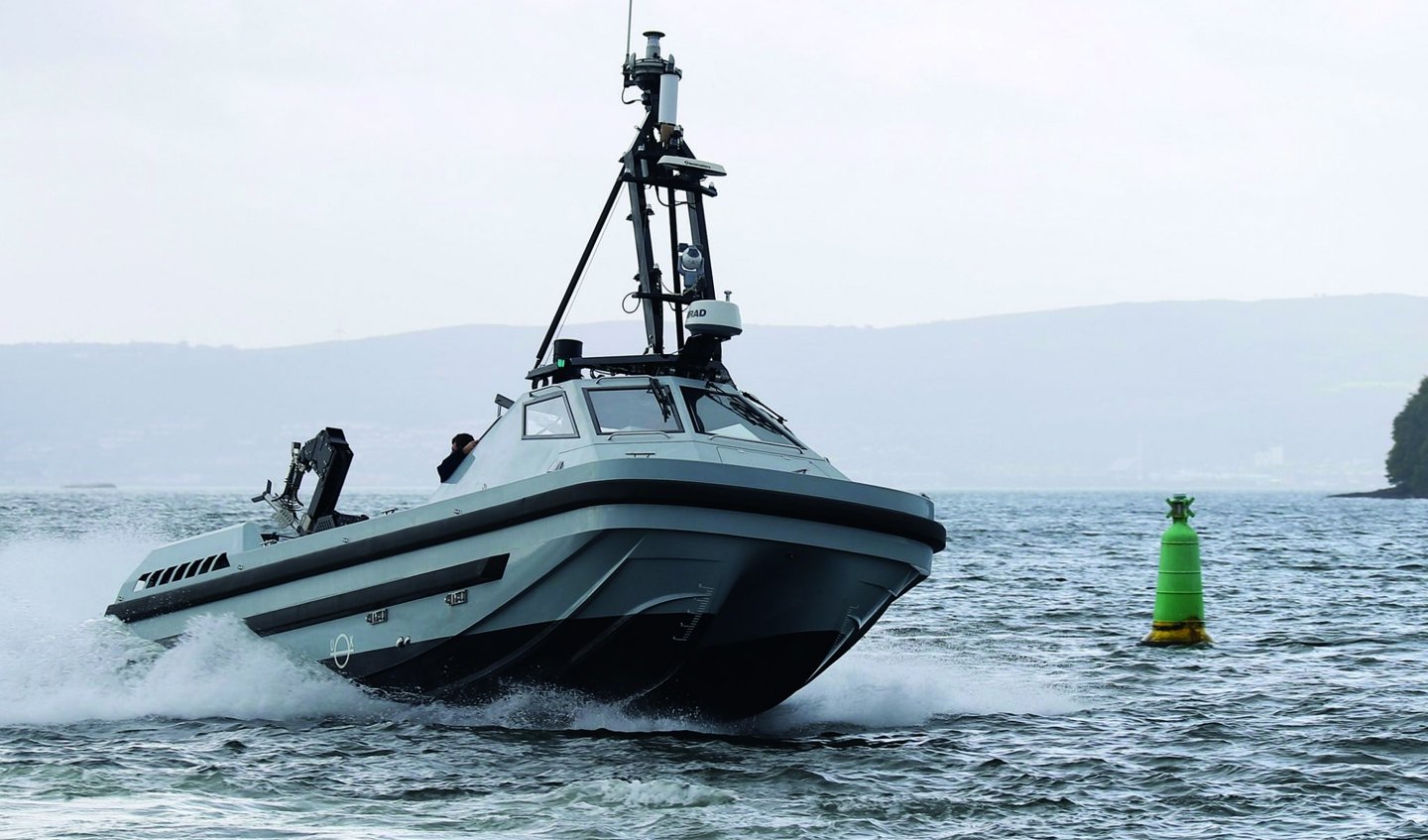Lloyd’s Register (LR) recently awarded its Grey Boat Code certification to the 11m-long RNMB HYDRA, an uncrewed mine countermeasure (MCM) vessel which is now also undergoing procedures for the classification society’s Unmanned Marine Systems (UMS) Certification. The Grey Boat Code, introduced by LR in 2019, applies to vessels of length less than 24m deployed in government-related operations such as security, coast guard operations, and policing.
The Code assures the standards of asset safety including those on board, those who could be affected by an asset malfunction, and the surrounding environment. Now, though, the likelihood of a steep climb in the number of uncrewed assets deployed in both defence applications and commercial marine business has led to further development of LR’s assurance framework. UMS Certification is now available.
Taking people off of assets that can be operated autonomously is proving a popular concept for navies around the world, according to Anderson Chaplow, head of LR’s naval team. There are a range of immediate benefits, he says. Whereas naval personel must be kept safe, sometimes make mistakes, and require living and working space on board, autonomous vessels can be smaller, cheaper, safer, and remain on station for longer.
The three ‘D’s
Chaplow explains that autonomy enables smaller assets to carry out the same tasks that have, until now, been carried out by larger, more expensive vessels. He says that autonomous vessels are ideally suited for deployment in ‘dull, dirty, or dangerous’ environments. Taking people off vessels facilitates safer missions and raises productivity, he declares.
Navies around the world are weighing up the pros and cons of embarking on pilot projects involving varying degrees of autonomy. Many of them are already LR clients. The classification society is the number one provider of classification and assurance services for navies, with clients across the world from Europe to the Middle East and South East Asia.

However, Matthew Palmer, an ex-submariner and LR’s Global Naval Business Lead, explains that greater autonomy may be attractive for a number of reasons. But it also brings new challenges with which LR is closely involved in both its naval and commercial shipping business.
The first and most obvious of these is what happens if the asset fails. How do you turn it off if it goes wrong? Has it failed in the way that it’s supposed to fail? An unmanned asset is more ‘disposable’ than one with people on board. But it might be deployed in an operation involving other assets that are not so easily disposable.
Palmer gives the example of a million-pound autonomous unit loaded with a £10m sonar. Losing the vessel may not be too serious, but retrieving the sonar could involve deploying personnel to undertake a mission that is far more dangerous than having them on board in the first place.
For these reasons amongst others, LR has developed a completely new framework for the assurance of autonomous assets. As autonomy continues to advance in the marine field, the new framework is likely to apply in commercial applications as well as naval operations.
"Greater autonomy may be attractive for a number of reasons. But it also brings new challenges with which LR is closely involved in both its naval and commercial shipping business."
Prescriptive framework
Chaplow explains that traditional procedures in commercial ship classification are broadly prescriptive. Class approves design, specification, build programme, commissioning, and sea trials prior to delivery. Shipbuilders like this arrangement – they know exactly what they have to supply, and by when.
But the goal-based assurance framework that LR has developed for autonomous assets works quite differently. It involves an analysis of the level of verification needed for the operations in which the unit will be deployed.
MCM vessels are a prime focus for autonomous operation because they are expensive and complex. But they undertake various tasks, some of which are routine – ‘dull’ – such as mine sweeping, or ‘dangerous’ – such as mine hunting. Therefore, their assurance requirements are different.
“So in our goal-based system, we begin with analysing the deployment of the asset,” Chaplow explains. “We decide what we want to achieve, and then work out how to get there. We need to understand the risks and ensure that our assurance requirements address them comprehensively.”
 DriX uncrewed surface vessel
DriX uncrewed surface vessel
This involves a completely new approach – ‘tailoring’ – which LR has developed for the next generation of autonomous assets. Tailoring adjusts the level of assurance to match the asset’s risk profile. In the context of MCM assets, for example, a mine hunter will have a more highly tailored level of assurance than a mine sweeper.
“Responsible navies are assessing the potential for more autonomy,” Chaplow concludes. “But they have to ensure that these assets will work safely. So we will use our goal-based approach. We prefer to call it naval assurance, rather than classification, because it is not prescriptive; it is tailored specifically for each project.”
In addition to the RNMB HYDRA, LR has recently awarded UMS Certification to BAE Systems’ Autonomous Pacific 24 Rigid Inflatable Boat and Uncrewed Surface Vessel (USV) certification to the DriX maritime drone, developed by Exail.
"LR's goal-based system begins with analysing the deployment of the asset. We decide what we want to achieve, and then work out how to get there. We need to understand the risks and ensure that our assurance requirements address them comprehensively."









